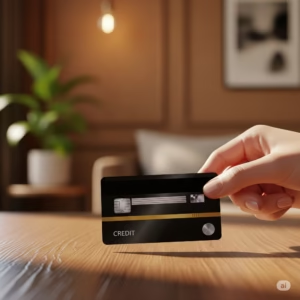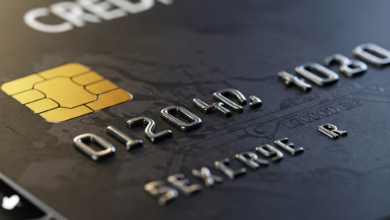7 tips to save money with your credit card
Learn some tips to save money with your credit card

In today’s dynamic financial landscape, credit cards are indispensable tools, offering unparalleled convenience and flexibility. However, without proper management, they can quickly become a source of financial strain. For newcomers to personal finance, mastering credit card usage is a crucial step towards financial wellness. This article unpacks seven advanced, yet easy-to-understand, strategies designed to help you save money and maximize the benefits of your credit card.
1. Master Your Credit Card Statement: Beyond the Basics

Understanding your credit card statement is the bedrock of smart credit management. Go beyond just checking the total amount due. Dive into the details: transaction dates, merchant names, and most importantly, your interest charges. Identify spending patterns that might be leading to unnecessary interest. Look for the “minimum payment due” and “payment due date.” Remember, paying only the minimum will significantly increase the total cost of your purchases due to accumulating interest. Utilize online banking portals and mobile apps to track your spending in real-time, giving you a continuous pulse on your financial health. Setting up alerts for large transactions or nearing credit limits can prevent overspending surprises.
2. Automate Payments for Punctuality and Peace of Mind
Late payments are costly, leading to fees and damaging your credit score. Automating your credit card payments is a simple yet powerful strategy to ensure you never miss a due date. Most banks offer options to set up automatic payments for the full statement balance, the minimum payment, or a fixed amount. For optimal savings, always aim to pay the full statement balance to avoid interest charges entirely. If this isn’t feasible, ensure at least the minimum payment is automated. This not only saves you from late fees but also builds a positive payment history, which is vital for your credit score. Double-check your bank’s auto-pay setup to confirm it aligns with your payment preferences.
3. Leverage Rewards Programs Wisely: Don’t Spend to Earn

Many credit cards come with enticing rewards programs, offering cashback, travel points, or discounts. The key is to use these programs strategically, not as an excuse to spend more. Before applying for a card, evaluate whether its rewards align with your lifestyle. If you travel frequently, a travel rewards card might be beneficial. If you prefer direct savings, a cashback card could be ideal. Avoid the trap of making unnecessary purchases just to earn rewards. The interest accumulated on such spending will quickly negate any benefits. Instead, integrate rewards cards into your existing spending habits. For example, use a cashback card for your regular grocery shopping or utility bills to earn rewards on essential expenses.
4. Understand and Utilize Grace Periods Effectively
A grace period is the time between the end of your billing cycle and your payment due date, during which no interest is charged on new purchases, provided you pay your balance in full by the due date. This period typically ranges from 21 to 25 days. Maximizing the grace period means making purchases early in your billing cycle, giving you more time to pay off the balance before interest accrues. If you carry a balance from month to month, you generally lose your grace period, meaning new purchases will start accruing interest immediately. Aim to pay your entire statement balance every month to consistently benefit from the grace period and avoid interest charges.
5. Negotiate Interest Rates: Don’t Be Afraid to Ask

Many consumers are unaware that credit card interest rates (APRs) are often negotiable. If you have a good payment history, have been a long-term customer, or are facing financial hardship, contact your credit card issuer to inquire about a lower interest rate. A lower APR can significantly reduce the cost of carrying a balance, especially if you anticipate needing to do so for a period. Be polite, clear, and confident in your request. Highlight your positive payment history and loyalty. While there’s no guarantee, many issuers are willing to negotiate to retain good customers. Even a small reduction can translate into substantial savings over time.
6. Strategically Use Balance Transfers to Reduce Interest Burden
A balance transfer involves moving debt from one credit card to another, often to take advantage of a lower or 0% introductory APR. This can be a powerful tool for consolidating high-interest debt and paying it off faster without accruing significant interest. However, be cautious: balance transfers often come with a fee (typically 3-5% of the transferred amount), and the promotional rate is only for a limited time. Plan to pay off the transferred balance entirely before the introductory period ends to avoid high deferred interest. Calculate whether the balance transfer fee is less than the interest you would save. This strategy is most effective when combined with a strict repayment plan.
7. Build an Emergency Fund to Avoid Credit Card Reliance

One of the primary reasons people rack up credit card debt is unexpected expenses. Building an emergency fund provides a financial safety net, reducing your reliance on high-interest credit cards for unforeseen costs like medical emergencies, car repairs, or job loss. Aim to save at least three to six months’ worth of living expenses in an easily accessible1 savings account. This fund acts as2 a buffer, preventing you from resorting to your credit card and incurring debt when life throws a curveball. Prioritizing emergency savings is a proactive step towards long-term financial security and reduces the temptation to over-rely on credit.
By implementing these seven advanced strategies, even those new to personal finance can transform their relationship with credit cards, turning them from potential liabilities into powerful tools for financial growth and savings. Remember, responsible credit card use is a cornerstone of a healthy financial future.





